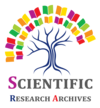Traditional uses, bioactive constituents and pharmacological importance of Origanum vulgare- A review
Department of Pharmacology, College of Medicine, University of Thi-Qar, Iraq.
Review
International Journal of Biological and Pharmaceutical Sciences Archive, 2024, 08(02), 079-095.
Article DOI: 10.53771/ijbpsa.2024.8.2.0088
Publication history:
Received on 09 November 2024; revised on 21 December 2024; accepted on 23 December 2024
Abstract:
Origanum vulgare (Family: Lamiaceae), is widely distributed in Africa, Asia and Europe. It is an important flavouring herb in Mediterranean cookery. Flowering branches were used as energy producer, as stomach booster, nervous calming, laxative, diarrhea, general weakness of the body, anticancer, migraine, for external use by rubbing in place of numbness and in toothache. Aerial parts were used as disinfection, pain reliever, relaxing, cardiorespiratory booster, antidiarrhoeal, stomach booster, cough suppressant, sexual dysfunction, sinusitis. Seed were bused as anticonvulsant, expectorant, pain reliever, cough suppressant, antidiarrheal, anti-inflammatory, menstrual regulator, diuretic and for the treatment of urinary tract infection. The phytochemical screening of the leaves extracts showed that Oreganum vulgare contained oils, carbohydrates, anthraquinones, coumarins, phenolic compounds, tannins, flavonoids, flavanonols, anthocyanins and many other bioactive compounds. The previous pharmacological studies revealed that Oreganum vulgare possessed antimicrobial, anti-inflammatory, analgesic, antioxidant, anticancer, protective antidiabetic, antiparasitic, reproductive, dermatological, gtastrointestinal antiurolithic, immunomodulatory and metal chelating activity. In the current review, Web Science, PubMed, Scopus and Science Direct, were searched to highlight the chemical constituents and pharmacological effects of Oreganum vulgare.
Keywords:
Constituents; Pharmacology; Therapeutic; Safety; Oreganum vulgare
Full text article in PDF:
Copyright information:
Copyright © 2024 Author(s) retain the copyright of this article. This article is published under the terms of the Creative Commons Attribution Liscense 4.0
